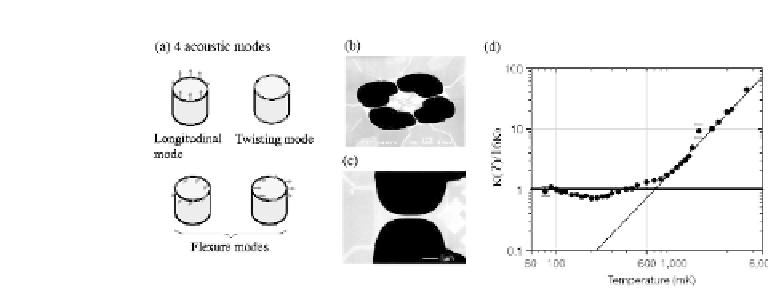Environmental Engineering Reference
In-Depth Information
Figure 2.2
(a) The four acoustic modes of quasi-1D system. (b) The
experimental setup used to measure the quantum of thermal conductance
κ
0
. (c) The enlarged view of a nanowire consisting of silicon nitride in Fig.
2.2a. (d) The temperature dependence of thermal conductance, normalized
to a universal value of 16
κ
0
, of the nanowire. Adapted by permission from
Macmillan Publishers Ltd: Nature (Ref. [5]),copyright 2000.
is referred to as the thermal conductance quantum and gives the
upper limit of the thermal conductance for a single conduction
channel [2-4]. This fundamental upper limit coming from quantum
mechanics can be regarded asa quantumof thermal conductance.
As seen in Eq. 2.9, the thermal conductance at low temperature
in the ballistic limit is independent of the system length
L
. This
is clearly different from the result derived by Fourier's law: the
thermal conductance is inversely proportional to
L
. In this sense,
the quantization of thermal conductance is one of the non-Fourier
thermal-transport phenomena caused by the reduction of system
size and is one of the most striking discoveries in the mesoscopic
and nanoscalethermal transport.
The quantization of thermal conductance is very similar to the
quantization of electrical conductance
G
0
=
e
2
/
h
in quantum wires.
It is noted that the thermal conductance quantum
κ
0
contains the
thermalenergy
k
B
T
insteadoftheelectricalcharge
e
intheelectrical
conductance quantum. This is because the thermal current carries
the thermal energy
k
B
T
while the electrical current transports the
charge
e
.
It is very challenging to observe the quantized thermal conduc-
tance
κ
0
experimentally, because its value is extremely small as
given in Eq. 2.10. In 2000, Schwab and his colleagues succeeded








